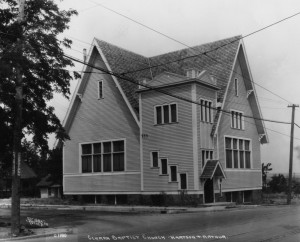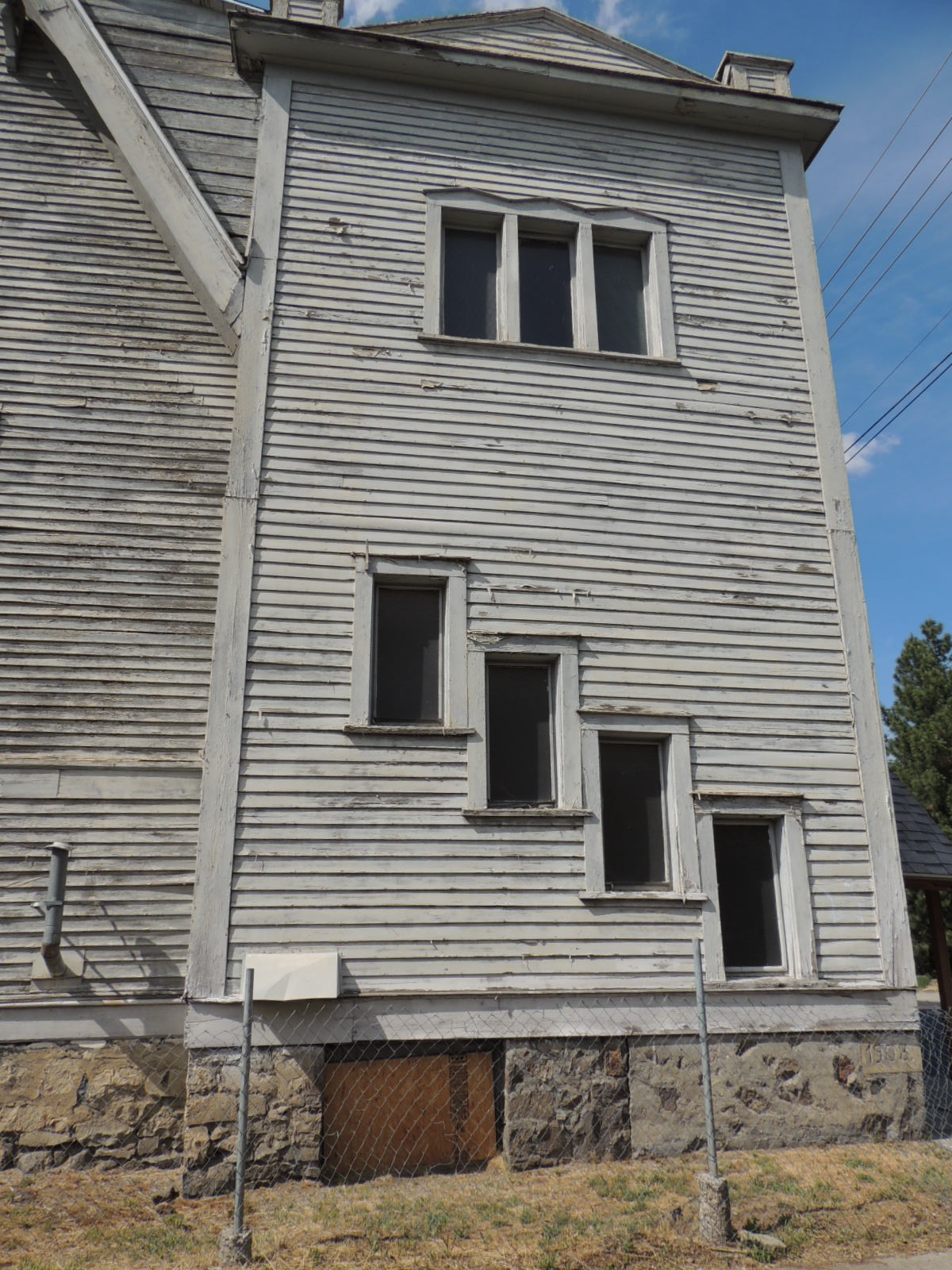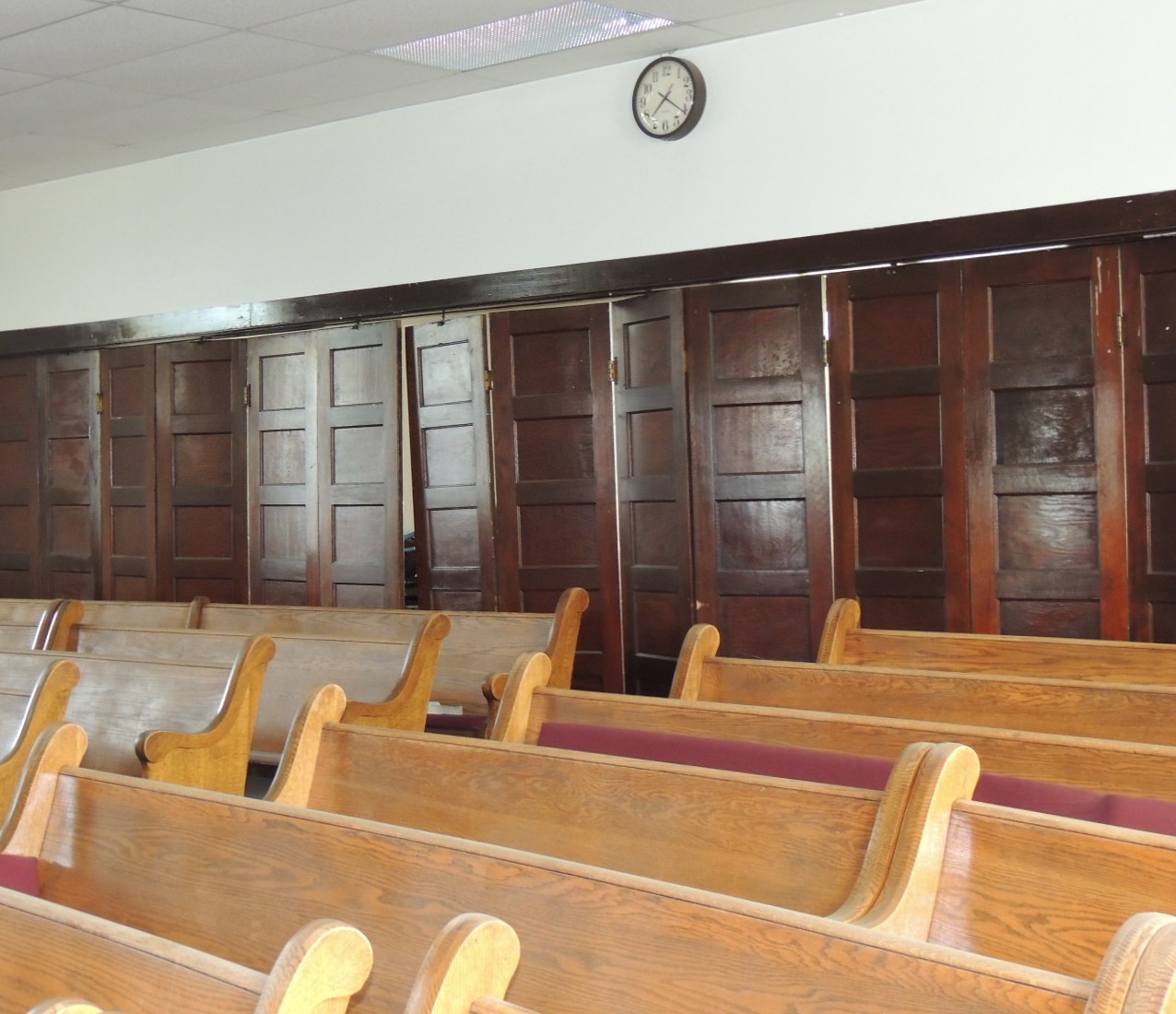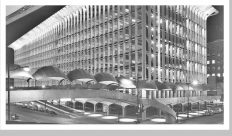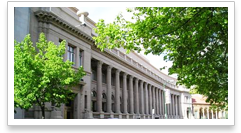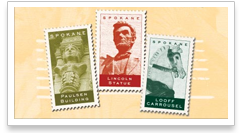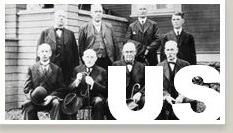First German / Arthur Street / Saint Matthew’s
Baptist Church
Despite its massiveness, the building on the corner of Arthur and Hartson is easy to miss. Built in 1909 and vacant for years, the homespun church with Gothic elements was once a lively venue of worship and social life. Its steeply pitched roofs, tower and emphasis on the vertical are markers of the Gothic style. Originally, decorative truss-work filled in the gable ends but they were removed by 1928. Nonetheless, the severe lack of ornamentation, besides the minute detailing of the bargeboards and decorative eave brackets, paints a story of a new church more concerned with having a space of their own than making an architectural statement.
According to the Baptist Home Monthly Mission, the German Baptist Church began with a single German sister and many Germans who could not understand English. Rev. F. J. Reichle, who arrived in Spokane around 1904 having been sent by the Home Missionary committee of the German Baptist Church of North America, discovered that the single German woman was the only member of the church. After organizing a church in nearby Colfax, Reichle established the First German Baptist Church in Spokane in 1906 and became its first minister. The congregation quickly swelled to seventy members and the church wrote that they had purchased land, a plot on the corner of Hartson Avenue and Arthur Street, in Spokane in 1907 to build a church. In 1909, the land was worth $2,000 and the church was built. The building was expected to cost no less than $5,000. In 1911, the church property was valued at $10,000, according to Reichle.
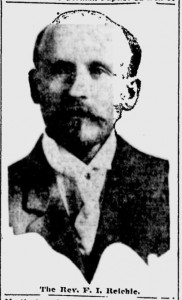
Rev. Reichle (1909-11)
On May 8, 1911, the Spokesman-Review reported that Rev. Reichle resigned from his pastorate at the German Baptist Church. The Spokane papers credit this departure to him receiving calls for ministry work in Montana and Oregon. However, the Morning Oregonian, a paper based out of Portland, from July 4, 1912 paints a different picture. According to the 1912 article, Reichle resigned due to an “investigation into his treatment in his home of Christina Lexa, a domestic employed by a Spokane society woman.” Reichle, 42, was “ousted for romantic developments” with Lexa, 25. However, their love conquered all and one year after the scandal, the two married.
On Sunday, October 8, 1911, the new pastor of the First German Baptist Church, Rev. Max Leuschner, gave his first sermon. By 1928, Rev. C. E. Panke was leading the congregation and it was during this time the addition to the front of the church was built. R. E. Reschke, the minister during the 30s, was succeeded by Rev. N. A. Christensen, the former pastor of Odessa Baptist Church, on April 16, 1939. At this point, the church was still giving two sermons on Sundays: one in English and one in German. It wasn’t until the 1940s that that church would transition to English.
Between 1945 and 1947, Jim Halbert became pastor for the newly named “Arthur Street Baptist Church” which belonged to the “North American Baptist Convention” (formerly the German Baptists). Halbert was succeeded by Rev. F. W. Bartel by 1950 and Rev. Walter F. Berkan was pastor in 1953. According to a1960 article from the Spokane Daily Chronicle, the Arthur Street Baptist Church became Terrace Heights Baptist Church after 1953 and relocated to a building on the corner of 21st Avenue and Myrtle Street with Berkan remaining as pastor.
Between 1953 and 1957, the church once again changed names and affiliations. By March of 1957, the religious building on the corner of Hartson and Arthur began serving a different minority population in Spokane. Instead of catering services to the German-speaking locals, the church became the new home for the St. Matthew’s Baptist Church congregation, a prominent black church in Spokane. Before moving, St. Matthew’s was located on the corner of Dean Avenue and Ash Street and was led by the Rev. D. H. Griggs. Griggs was also president of the “General Baptist Convention of the West” which in 1951 was an association made up of nineteen black congregations across the Pacific Northwest.
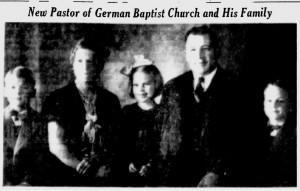 Rev. Leuschner (1911-20s)
Rev. Leuschner (1911-20s)
It was in the 1950s and 60s that the Civil Rights Movement became a powerful, pulsing beat that drove the nation forward. The St. Matthew’s Institutional Baptist Church, in its new location, acted as a place of worship and also as a meeting hall and platform for civic change. The National Association for the Advancement of Colored People frequently met at the church from the 1950s onward and even screened films, like a “Walk to Freedom” and “The Life of Booker T. Washington” to help further the cause.
On July 21, 1963, Dedication Services were held at the church to welcome the new pastor, Rev. Samuel L. Singleton. The church celebrated with refreshments and an open house at the home of the new reverend. The following decade, Rev. Leon T. Garcia, former pastor of Calvary Baptist Church and treasurer of the General Baptist Convention of the Pacific Northwest, led the St. Matthew’s congregation.
Rev. Eugene Singleton would be the last pastor to serve his congregation from the building on Hartson and Arthur. In 2006, the church building had fallen into disrepair and the current, small congregation could not afford the steep repair bills. At the same time, the Sunset Baptist Church congregation who worshiped at 2815 W. Sunset Blvd. had just disbanded. It was decided that it was in everyone’s best interest for the St. Matthew’s congregation to move to the Sunset location. That left the building at 630 S. Arthur vacant.
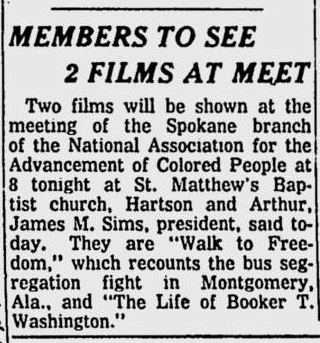 Spokane Daily Chronicle, March 25, 1957
Spokane Daily Chronicle, March 25, 1957
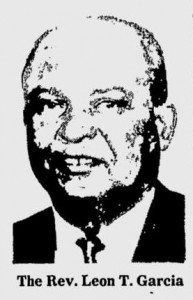 Rev. Garcia (1977-81)
Rev. Garcia (1977-81)
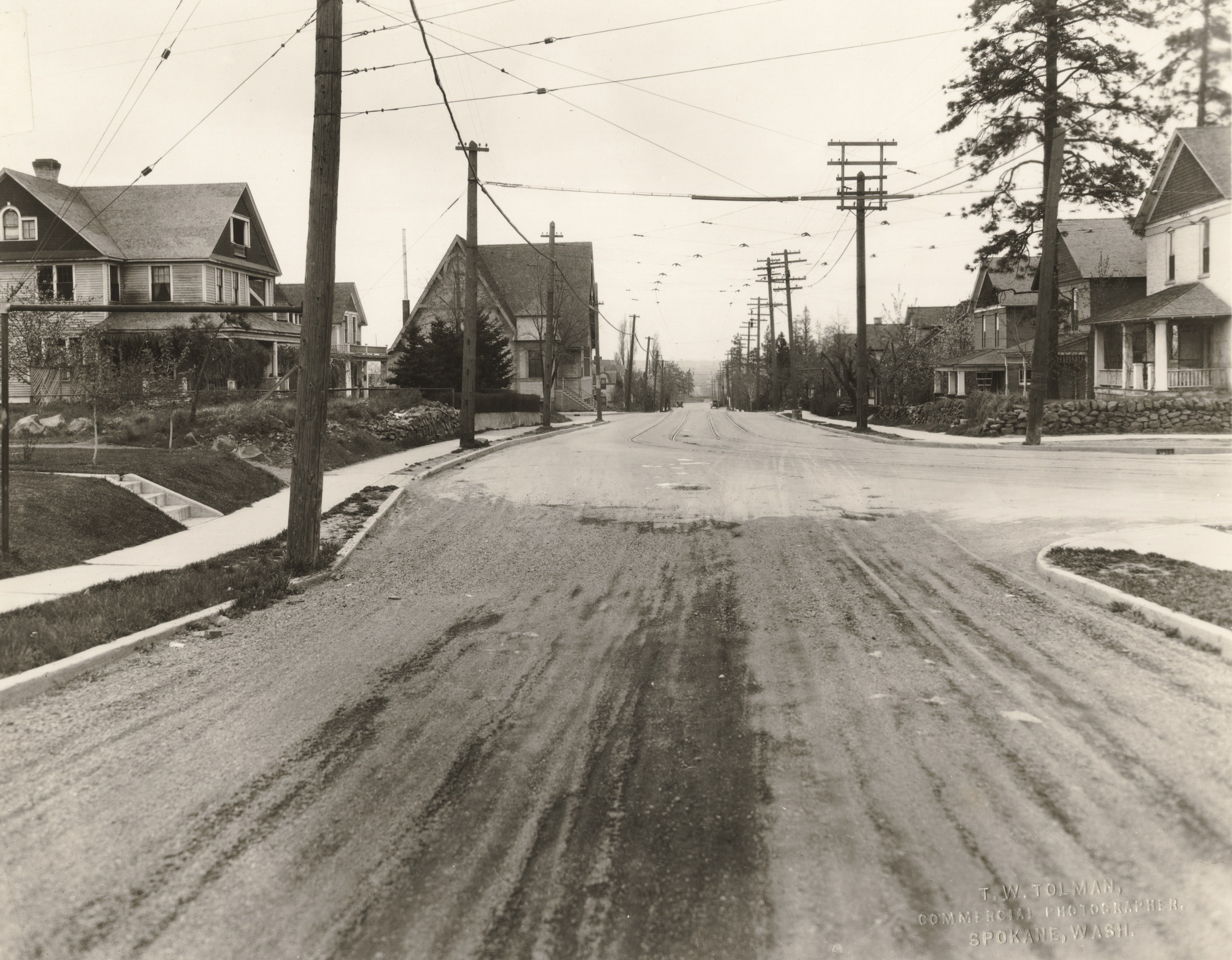 Looking north down Arthur Street (~1908-1928)
Looking north down Arthur Street (~1908-1928)
Download the inventory in its entirety which includes the architectural description, more pictures and references used: First German Baptist Church Inventory Form
